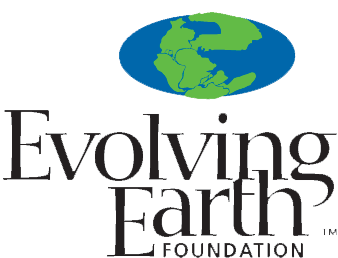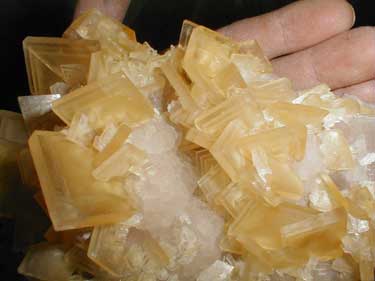Congratulations to the following 2003 Evolving Earth Student Grant recipients:
Coulson, Alan
Enrolled in the PhD program, North Carolina State University
“Using Vertebrate Fossils as Proxies of Temperature and Salinity in Ancient Seas”
Isotopic analysis of sea turtles and fish fossils will provide temperature and salinity data for the Late Cretaceous Western Interior Seaway in order to strengthen climate models and clarify anomalous invertebrate data.
Kinchloe, April
Enrolled in the PhD program, University of Colorado
“A study of the abundance and diversity of Eocene spiders from Florissant, Colorado”
To evaluate the stability of spider guilds through time, I will collect from two modern warm temperate environments and compare them to the Florissant.
Lamanna, Matthew
Ph.D. candidate, University of Pennsylvania
“New titanosaurian sauropod dinosaurs from the Cretaceous of Patagonia”
Anatomical and phylogenetic analysis of new titanosaurian sauropod dinosaur taxa from the Late Cretaceous of Patagonia, Argentina, including a basal genus represented by a complete skull and cervical vertebrae and a derived form known from an articulated caudal series.
Lawrence, Kira
Graduate Student, Brown University
“The Pliocene Climate transition: A North Atlantic Perspective”
I will test a recent hypothesis explaining the Pliocene Climate Transition using alkenone (Uk’37) derived estimates of sea surface temperature (SST) variations. I will use spectra analysis to examine how the dominant frequencies in SST and global ice volume records evolved during the onset of Northern Hemisphere Glaciation.
Leslie, Elisabeth
PhD Student, University of Wisconsin
“The climatic signature of the Golden Valley Formation (western North Dakota): Implications for carbon cycling during the Initial Eocene thermal maximum”
The project aims to understand the negative feedback mechanisms associated with a period of rapid, transient warming with regard to the global carbon cycle through the study of stratigraphy, carbon isotopes and clay mineralogy.
Ng, Tin-Wai
University of Iowa
“Paleobiology of late Marjuman (mid-Cambrian) trilobites and the Marjuman-Steptoean mass extinction, Great Basin, Nevada and Utah”
This project will work on detailed stratigraphy and monographic systematic description of the trilobite faunas of the Great Basin Area. Consequently, we can assess the paleoecological context of the Marjuman-Steptoean extinctions on a regional environmental basis.
Nyborg, Torrey
PhD candidate, Loma Linda University
“Geologic interpretation of Copper Canyon, Death Valley National Park, CA”
This study proposes to reconstruct the depositonal, paleoenvironment, and biostratigraphy of a geologically unexplored fluvial-lacustrine sequence in Death Valley. The sequence is of critical concern because it contains the most diverse mammal/bird ichno site in North America.
Shultz, Carol
Student Research Assistant, Loma Linda University
“Stromatolites: sensitive indicators of paleoenvironmental dynamics”
Analyze patterns found within a single stromatolite bed (vertically within the stromatolites and laterally across the basin) to determine the nature of the sedimentary record preserved by lacustrine stromatolites, and its paleoenvironmental implications.
Smith, Shane
PhD Student, Washington State University
“Paleoclimate and Paleodrainage Evolution of the Miocene sedimentary interbed”
The proposed study aims to identify and utilize stable isotopic, paleopedologic, paleontologic, sedimentologic, and stratigraphic records of these interbeds to reconstruct the paleoclimate record and paleodrainage patterns during their accumulation and/or subsequent pedogenesis.
Wertheim, Jill
University of California, Santa Barbara
“Unraveling the evolutionary and geologic history of the central Chilean Andes using biochronology and geochronology”
Unexpected paleontological discoveries in the Chilean Andes have helped illuminate the region’s evolutionary and geologic history, Mammal fossils, complemented by 40Ar/39Ar radioisotopic dating, are valuable chronological tools, helping place the hosting rock unit into a tectonic framework, and clarifying mammalian history in South America.

